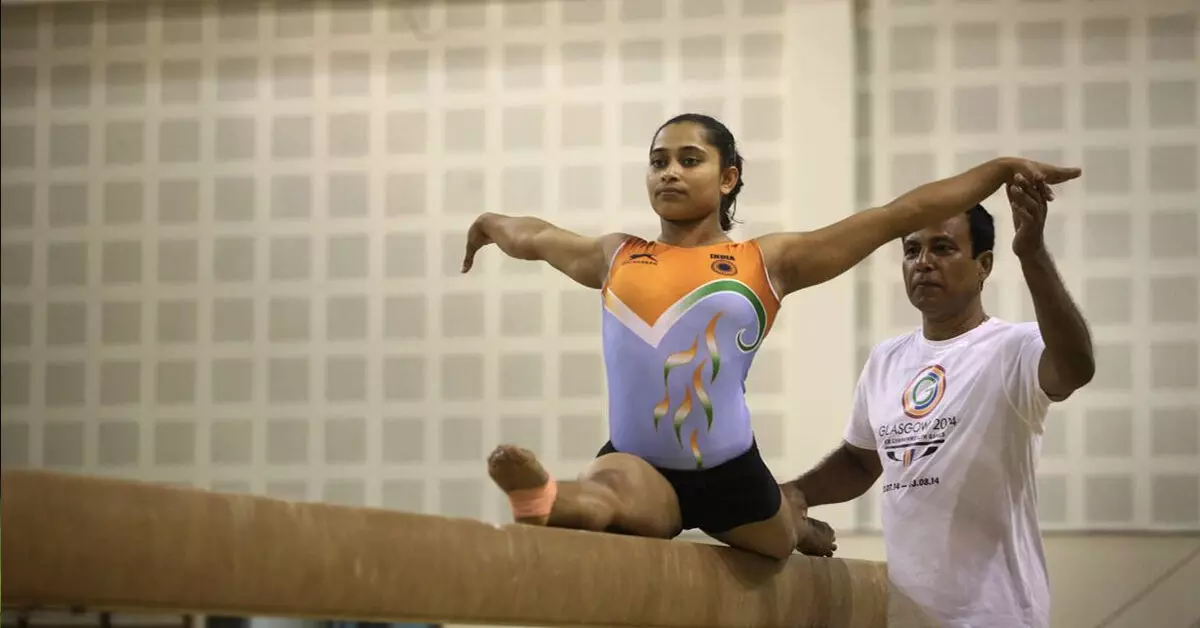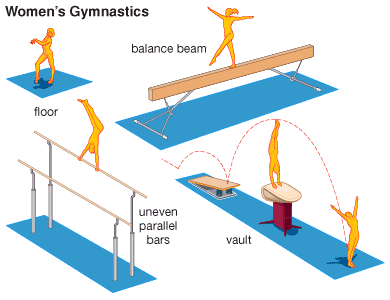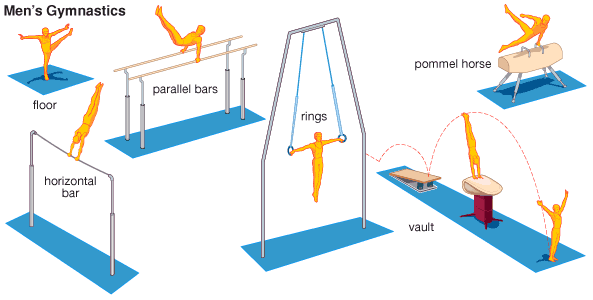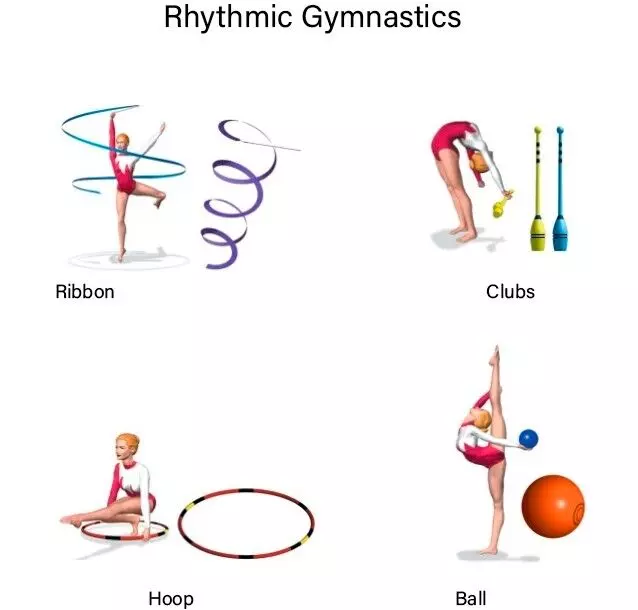Gymnastics
What are the rules of Gymnastics: Categories, Scoring, History at the Olympics
All you need to know about Gymnastics — Rules, categories and its history at Olympic Games.

Dipa Karmakar (Source: The Indian Express)
Gymnastics at the Tokyo Olympics shall be held in three formats, identified to be in three categories; artistic gymnastics, rhythmic gymnastics and trampolining. The venues for this event are designated to be held at the Tokyo Metropolitan Gymnasium and the Ariake Gymnastics Centre.
The patterns of events attributed are categorised into men's and women's, and is further evaluated within two modes 'Individual' and 'Team all-around'. All events except trampolining have to team performances in the count. The judging for this event is usually done with additive factors of execution, presentation skills and degree of difficulty.
In Olympic events and World Champions, five judges together make the execution panel and two others officiate the difficulty score.
Artistic Gymnastics
Being part of the Olympic programme all the way from the 1896 Games of Athens, Artistic Gymnastics initially only introduced with men was later inclusive of women as well. But that was not until the Amsterdam Olympics at 1928. Harshly, the word 'Artistic' itself was refurbished once the sport became more inclusive.
One significant highlight about Artistic Gymnastics at Tokyo Olympics is, the reduction of one spot from five to four members per team, while provisional allocations are available for up to two specialists.
Dimensions
Included four variants of competitions for women in this event are as follows:
- Vault - height at 125, 95cm surface width and 120cm long. From a run 25m long, the competitor uses the springboard to launch themselves into the air, hence enabling a variety of airborne twists and saltos which are rewarded for.
- Uneven Bars - Two bars, one at 2.5m above grounds and the second at 1.7m. With a diameter of 4cm, the bars can be flexed between 1.3 and 1.8m according to the gymnast's preference. A variety of swings and twists on the two non-parallel bars formulate the event. Considered to be an ultimate test of the upper body, the competitors need to transit between the two, lodging to almost six feet in the air.
- Balance beam: 10cm wide bar with 5m in length and 1.25m above the ground. Balance and precision over a series of flips turns and jumps on a foam-padded beam is the usual course to this event.
- Floor Exercise: The area of performance measures 1.2mx1.2m and 16.97m at the diagonals. A combination of dance, gymnastics and drama provide a 90-second routine for each competitor to perform. A rhythmic movement including tumbles, leaps and pirouettes from a springing floor is the pattern here.

Included six variants of competitions for men in this event are as follows:
- Floor exercise: Similar to women's events dimension
- Horizontal bar: With 2.4m in length and 2.8m high above the ground the bar bears a diameter of 2.5cm. With flips, moves, and power swings on one bar, artistic gymnastics has its format made.
- Parallel bars: Two bars high at 2m each end. With two bars 3.5m long, the athletes have the provision to adjust the width ranged within these at 42cm and 52cm. Includes and An oval bar 5cm high and 4cm wide. Similar to the other bars gymnastics, moves win you points regarding difficulty and execution, but instead, it's on two parallel bars.
- Pommel horse: The prop has a body of 1.6m in length and 35cm in width and is 115cm above the ground. Arms and upper body strength are immensely required to hold the body moving fluidly on top of the horse when there are moves as extravagant as legs swinging around the prop and in other aerobatic positions.
- Rings: Set at 50cm each apart lay two rings, 2.8m high above the ground. The ring tower which is larger where the rings straps are attached is ought to be at 5.8n high and the distance from the ring tower to the tip of the rings bottom is supposed to be at 3m. Holding both the two rings, the competitors exhibit moves defying gravity.
- Vault: with 95cm of width and 120cm in length, the vault is set at a height of 135cm. A run-up is allowed of 25m for all gymnasts. Holds similar patterns to the women's competition.

Scoring
As mentioned earlier, the scoring system is composed of two vital components the execution and difficulty scores.
The execution score has a traditional 10.0 system, with the judges starting at the same and then later reducing points as mistakes and fault are made. Mistakes and faults can be from landings, missed handstands and even a whole point if the gymnast is to fall.
As for difficulty scoring, the points are marked from zero. And the rewarded points differ in three ways. Firstly, as there as composition requirements of four, an athlete is awarded points ranging from 0.5 to 2.0 for each. Secondly, based on the difficulty of the elements in routines, a point tally of 0.1 valued as A-ranges to 1.0 as J and is asserted to the gymnast. Each routine has credit for the eight most difficult elements in women's and ten in men's.
Rules
- Only three of the routines are limited to time in Artistic Gymnastics: Men's and Women's floor exercise and Women's balance beam. The one even that has music set to it is women's floor exercise. Usually, routines running post the time limits have to pay a penalty of 0.1.
- Events performed along with music are expected to receive points for a categorical approach to artistry, composition and music/musicality.
- Coaches determine athletes competitive capacity for levels.
- Athletes must compete in the same levels in all events an All-Around.
- Female gymnasts participating in artistic gymnastics aren't allowed to perform in rhythmic gymnastics.
- At the Program level, an artistic gymnast specialising in fewer events than the all-around total (i.e., three) may compete on two different levels, with a one-level difference between. In an international competition, an athlete must be on the same level in all events entered.
Rhythmic Gymnastics
Introduced at the 1984 games in Los Angeles, a female-only event has gained more popularity than ever. Included competitions for women in this event are as follows: Group and individual all-around. Unlike earlier where five props were used for an event, committees have abandoned the usage of ropes and now only limits to usage pf Rope, Ball, Hoop and Ribbon.
Individual format in Rhythmic Gymnastics.
During the course of individual competitions, the gymnast is intended to perform choreographed routines with each of the above-mentioned apparatuses. The rules applied here include maintaining the flow of the apparatus at all times and is to create a flow in sync to the music.
All-round group event in Rhythmic Gymnastics
Unlike individuals, the rules here apply that only two apparatuses are allowed and two performances are accounted for. The first routine requires the gymnasts to use similar props throughout, and during the second, a mixture of the two selections are allowed.
Dimensions of apparatuses in Rhythmic Gymnastics
- Hoop: 80 - 90cm in diameter
- Ball: 18 - 20cm in diameter through the middle and should weight 400g minimum.
- Clubs: 40 - 50cm in length and weight of 150g
- Ribbon - 6m in length and must remain in motion constantly in the midst of routine.

The floor court size for this event is assigned to be 12 by 12 m in length and width.
Scoring in Rhythmic Gymnastics.
Similar to the other patterns explained before, Rhythmic performances follow scoring patterns which include vital elements of D:- difficulty and E:- execution scores which add to a total of 20.
- E:- on the basis of how well the routine was executed either in individual or group formats, the points are awarded by the judges, of which an average is taken from the three scores and considered to be the final result.
- D:- on the basis of performance elements like leaps, jumps, and usage of apparatuses, scores are given to participants after an average limited to 10.
Rules of Rhythmic Gymnastics
- Only female event
- Athletes may compete in one or more events.
- A gymnast may perform in one or two group routines in addition to individual routines or just perform in group routines itself.
- The video of the compulsory routines is the official version. If a difference exists between the video and the written text, the video must be followed. For group routines, the video is the only version of the choreography.
- Here, an Olympic order is maintained, meaning the participants change between apparatuses in sequential order.
- All pivots combinations should be done on toes without heel support.
- A clear depiction should be made while leaping and jumping, and all arched leaps should have head and leg in contact.
- Balances ought to be performed on knees and toes, with an artistic shape.
Trampoline Gymnastics
A total of 32 members participate in this event, 16 men and 16 women. Included competitions for men and women in this event are as follows: Men's and Women's individuals. In qualifying rounds, there are two routines that all participants go through. The first contains a series of special requirements and the second being a voluntary exercise. A point tally of both these elements determines the finalists.
The Ariake gymnastics centre shall hold the venue for this event as well.
There are three airborne positions that athletes take during this performance: the tuck, pike and layout or straight. Rotations and twists are induced with these in order to elevate a difficulty and thus scoring more. Each performance is approximately 20 seconds long.
With participants flying off to heights of 8m and more, trampoline gymnastics would be a sight at the Tokyo Olympics.
Scoring
Athletes are awarded points based on routines like difficulty, execution, time of flight and horizontal displacement.
Here the difficulty score starts from 0.0 and climbs up as skills are performed.
The execution score is started at 10.0 and is later reduced by the judges as errors occur from participants.
A slightly complicated manner for scoring in this event is that the participant will receive five executions scores from the judges. Out of which the highest and lowest marks are scrapped, and a sum of the rest three added to the difficulty score determines the total final mark.
Dimensions
Consisting of a rectangular bed made from a woven synthetic fabric, the trampoline measures at 4.28m in length and 2.14m in width.
Rules
- Starting and finishing on feet is a top priority.
- After presenting to the judges a participant must commence within 60 seconds
- One "out bounce" is what competitors are allowed with, whilst straight jumping, to control their height at the end of a routine, before sticking the landing.
- After a performance, the trampoline should be at standstill, and no movement is allowed for the finishing 3 seconds.
- 3 basic shapes: Tucked, piked straight as mentioned above is what is expected to be performed by the athletes.
Age Requirements
All participants are required to be born before the 31st December of 2004 for the women's competitions. Meaning the age should be at least 15.5 years old.

